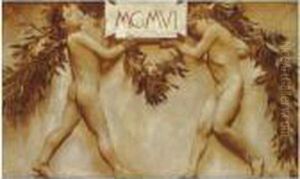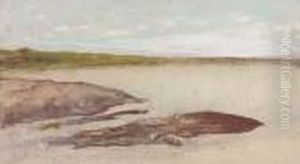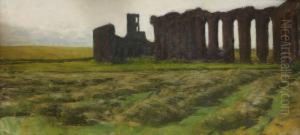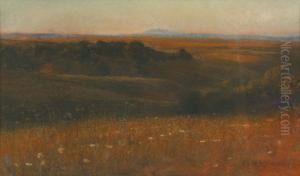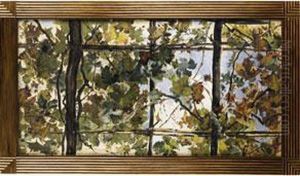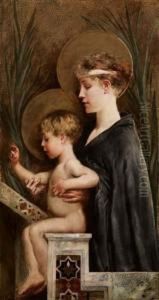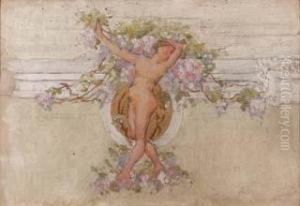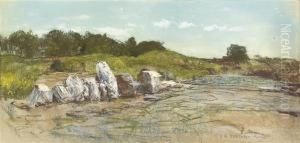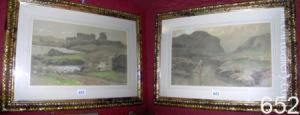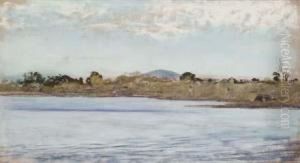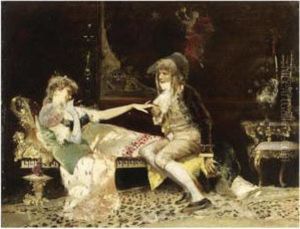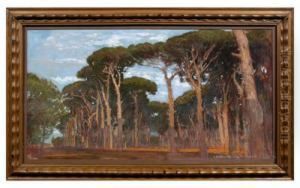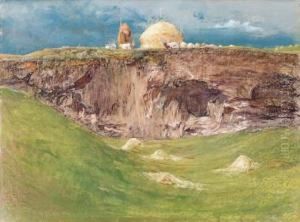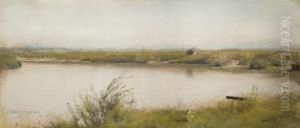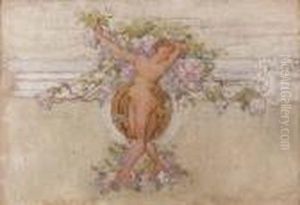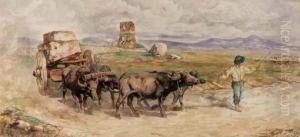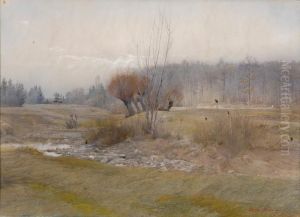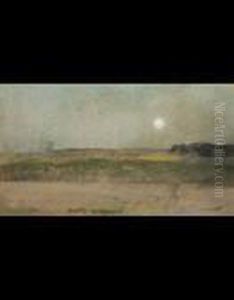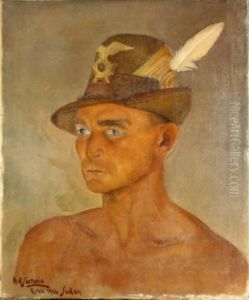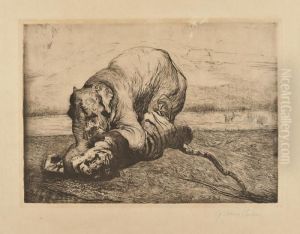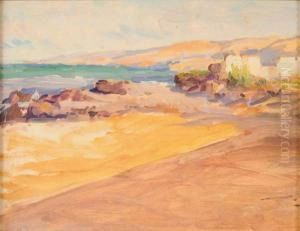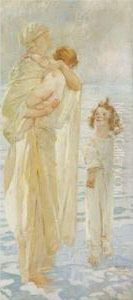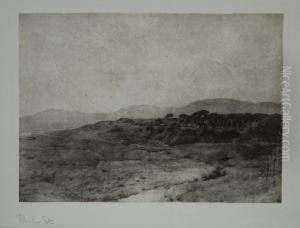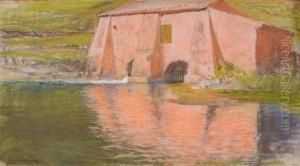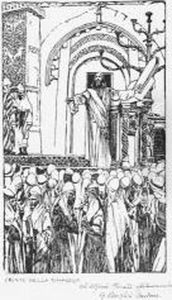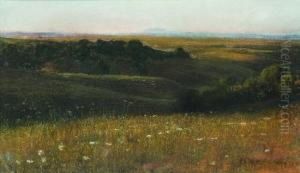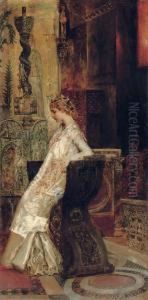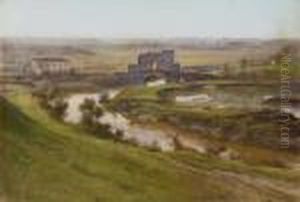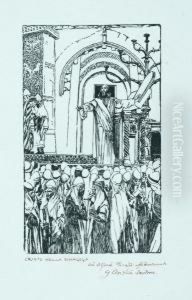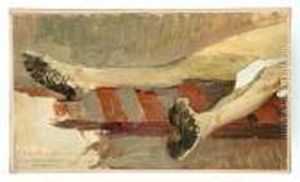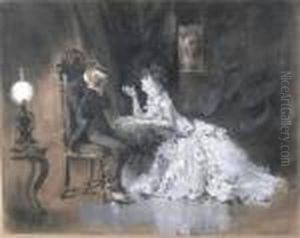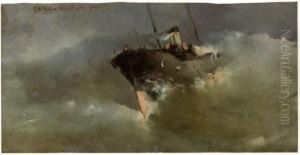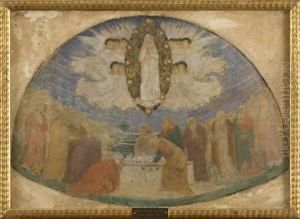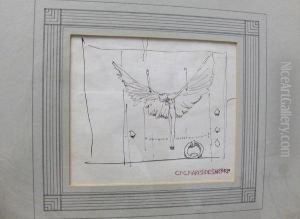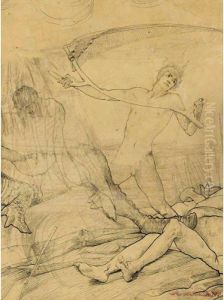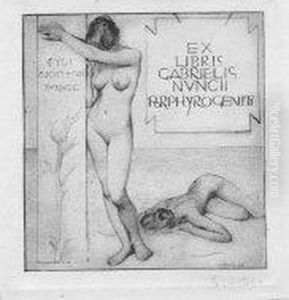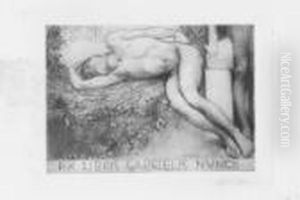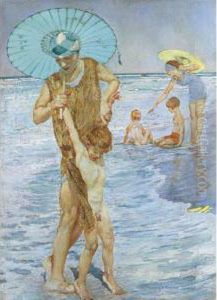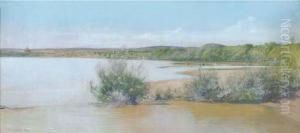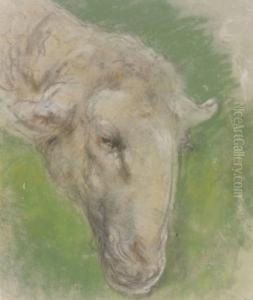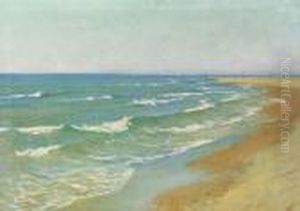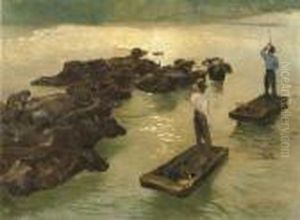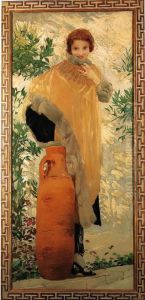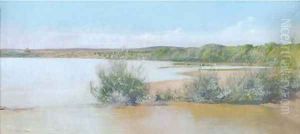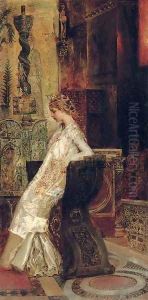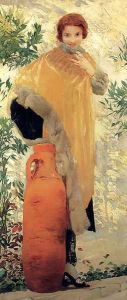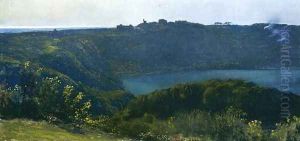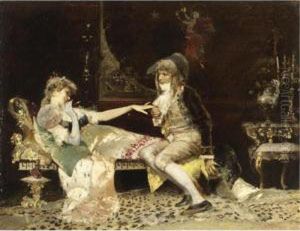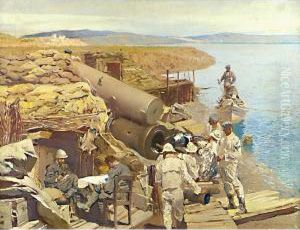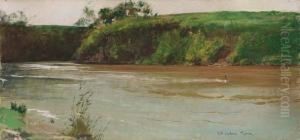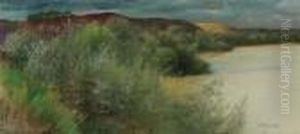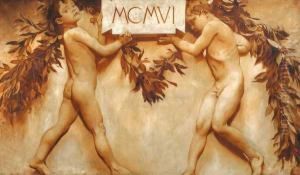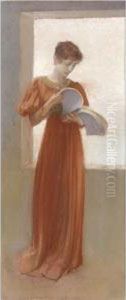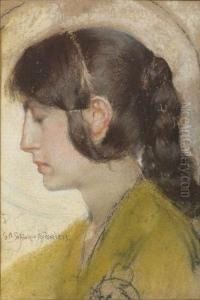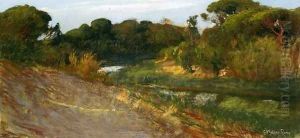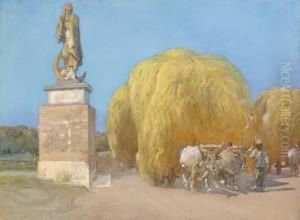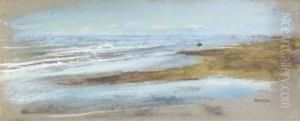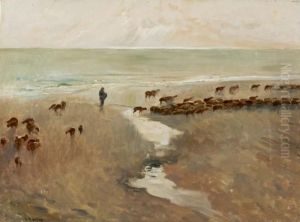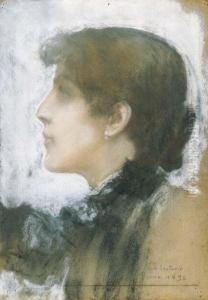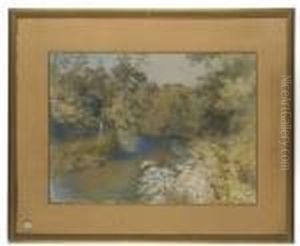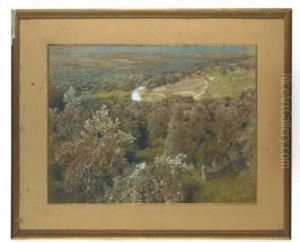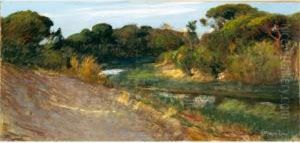Giulio Artistide Sartorio Paintings
Giulio Aristide Sartorio was an Italian painter, film director, and writer, who played a prominent role in the Italian art scene at the turn of the 20th century. Born on February 11, 1860, in Rome, Sartorio was a key figure in the Symbolist movement in Italy and is often associated with the Divisionist technique, which is akin to Pointillism and was favored by many Italian artists at the time for its scientific approach to color and light.
Sartorio received his artistic training at the Accademia di San Luca in Rome and was influenced by the works of the Italian Renaissance masters, as well as contemporary Symbolist and Pre-Raphaelite artists. His work is characterized by a strong attention to detail, use of allegorical subjects, and a fascination with themes of nature, mythology, and sensuality.
In addition to painting, Sartorio was involved in other forms of artistic expression. He worked as an illustrator, designing posters and book illustrations, which were marked by the same Symbolist style of his paintings. In 1914, he ventured into the burgeoning world of cinema and directed 'La Gerusalemme liberata', a silent film based on Torquato Tasso's epic poem 'Jerusalem Delivered'. The film was noted for its ambitious scale and Sartorio's attention to visual composition, which reflected his background as a painter.
Throughout his career, Sartorio exhibited his work widely, including at the Venice Biennale and other important Italian and international exhibitions. He was also a member of various artistic societies and contributed to the intellectual and cultural discourse of his time.
Sartorio's legacy extends beyond his own artworks; he was a mentor to younger artists and influenced the development of modern Italian art. Despite his impact on Italian art, Sartorio's work was somewhat overshadowed by his contemporaries, and only in recent decades has his contribution to the art world been reevaluated and appreciated more fully.
Giulio Aristide Sartorio died on October 3, 1932, in Rome, leaving behind a body of work that continues to be studied and admired for its beauty and complexity.
